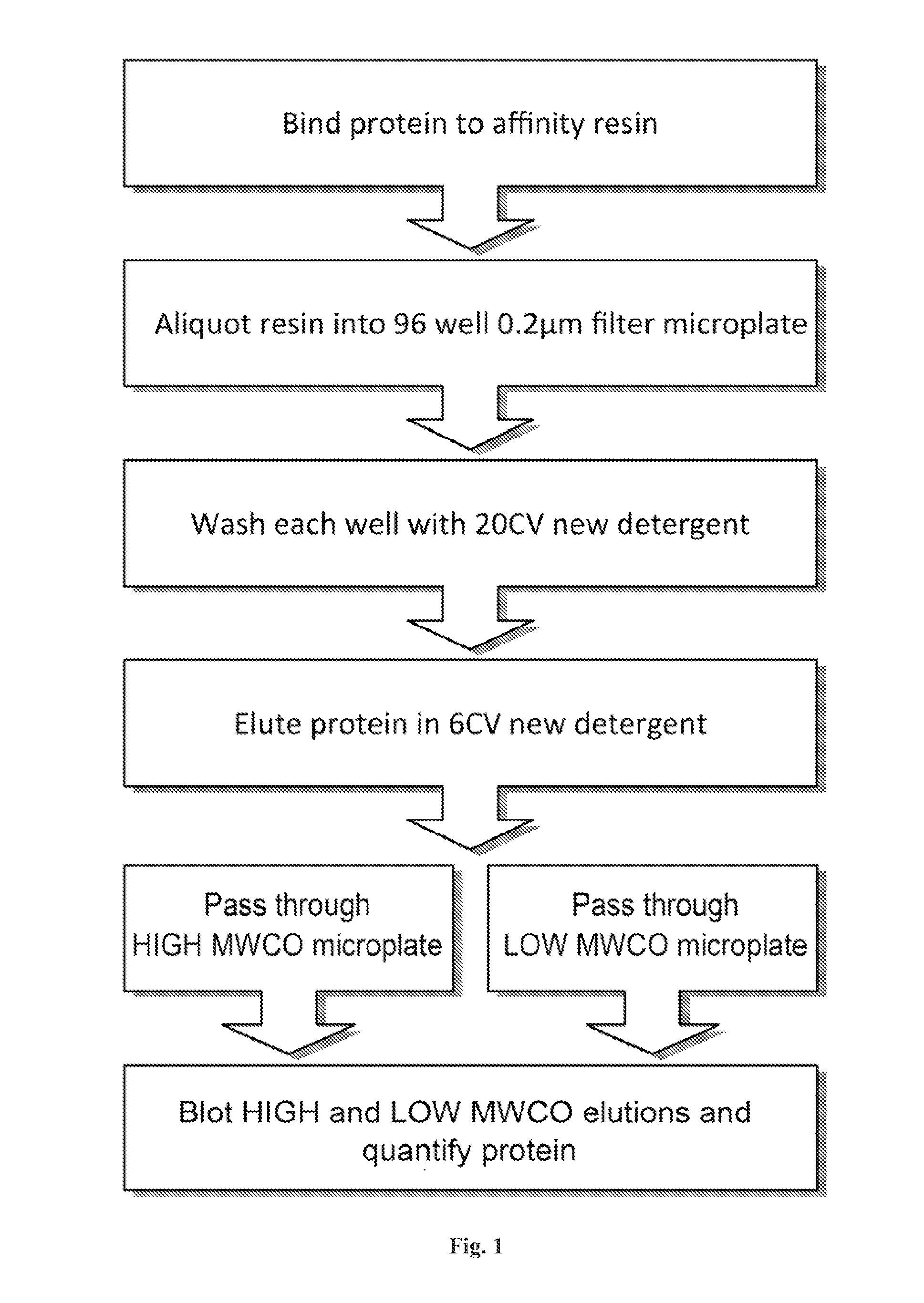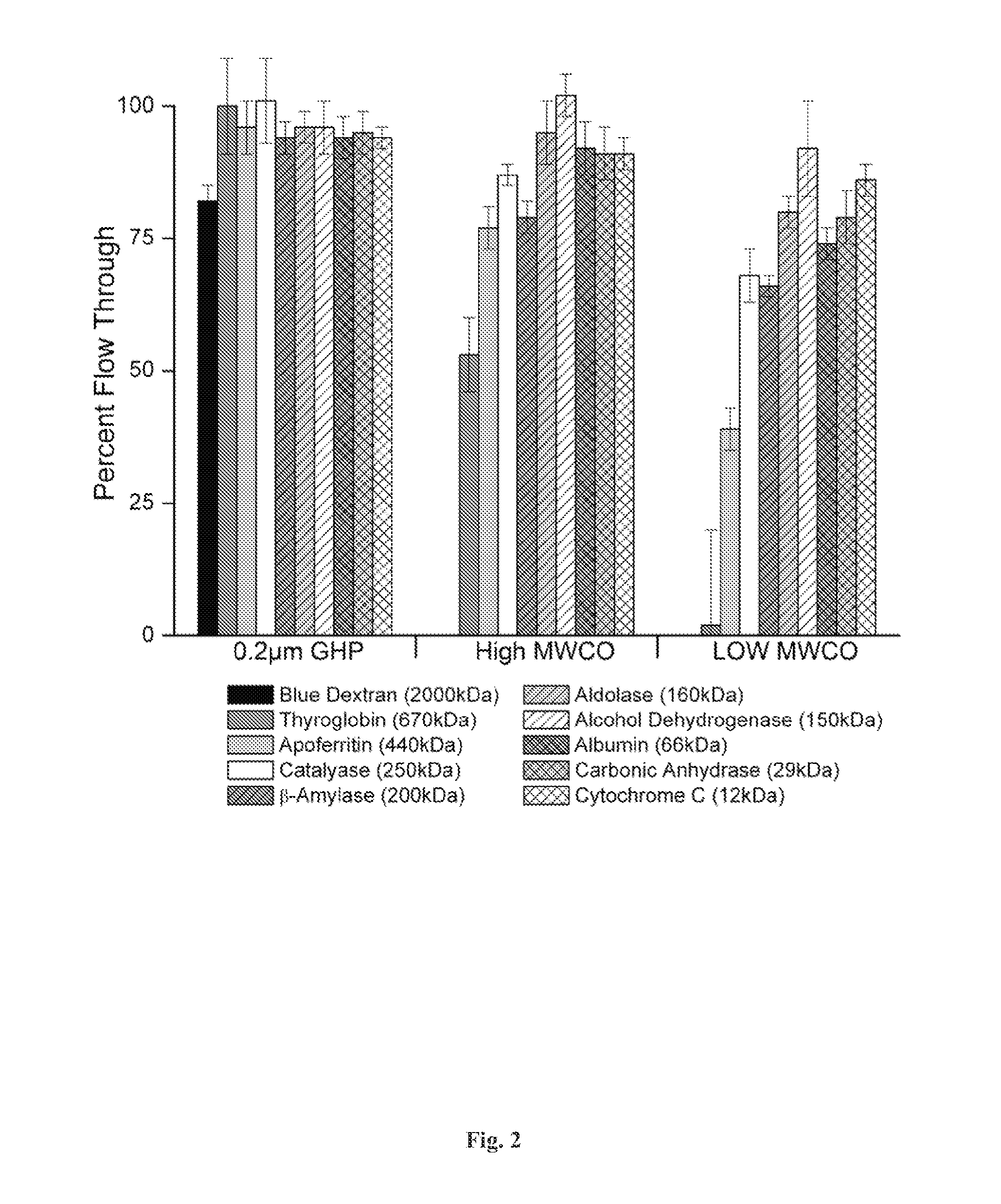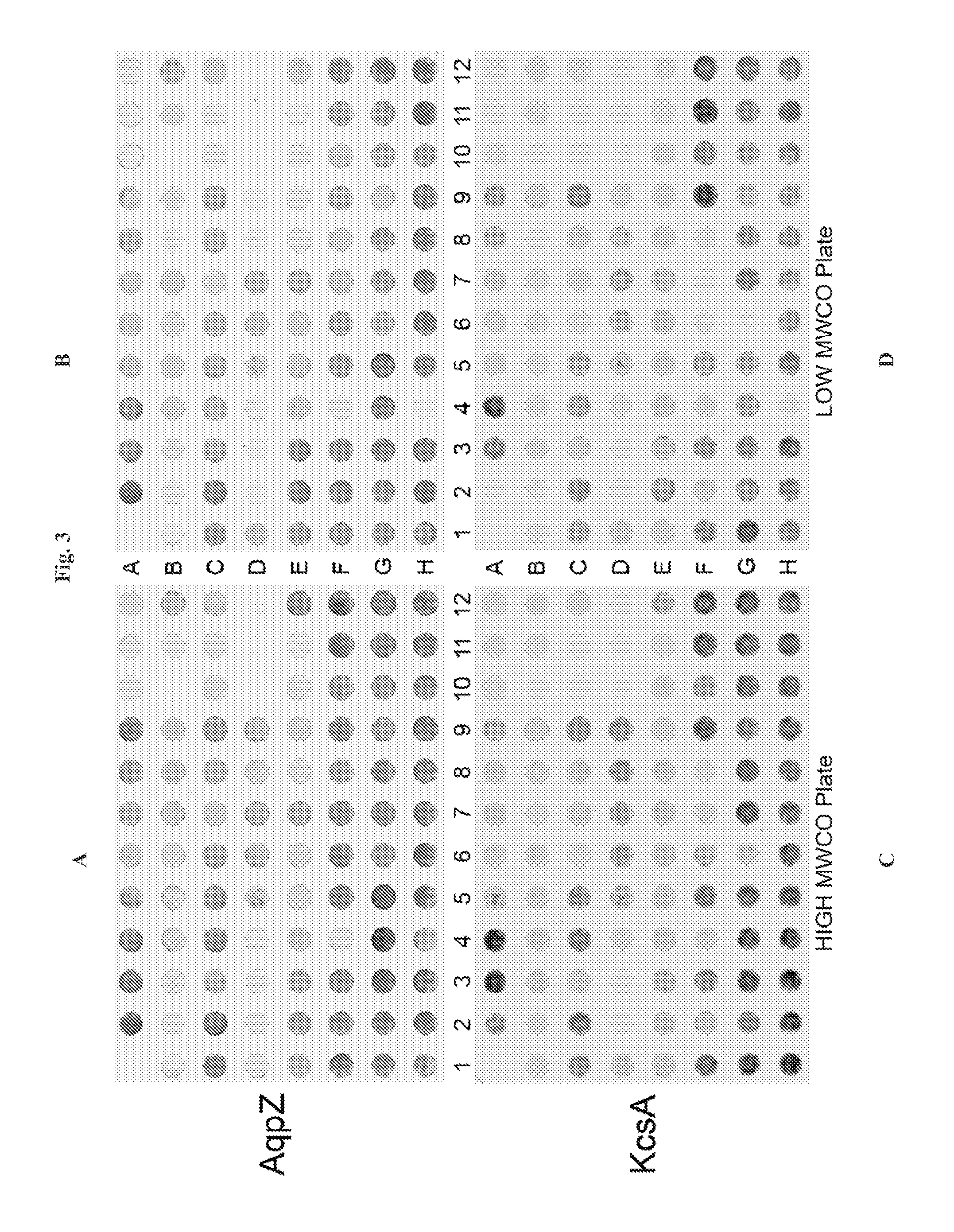Compositions and methods for membrane protein detergent stability screen
- Summary
- Abstract
- Description
- Claims
- Application Information
AI Technical Summary
Benefits of technology
Problems solved by technology
Method used
Image
Examples
embodiments
[0102]Structural studies on integral membrane proteins are routinely performed on protein-detergent complexes (PDCs) consisting of purified protein solubilized in a particular detergent. Of all of the membrane proteins crystal structures solved to date, a subset of only four detergents has been used in over half of these structures.
[0103]Unfortunately, many membrane proteins are not well-behaved in these four detergents and / or fail to yield well-diffracting crystals. Identification of detergents that maintain the solubility and stability of a membrane protein is a critical step, and can be a lengthy and “protein-expensive” process. There is an unmet need for compositions and methods useful for screening multiple detergents and determining those best suitable for proteins to obtain well-diffracting crystals. The present application discloses an assay that characterizes the stability and size of membrane proteins exchanged into a panel of 94 commercially available and chemically diver...
examples
[0128]A description of examples of the invention follows. Use of the invention is not limited to these applications. In one embodiment, the invention consists of two parts, the detergent panel and the DF. Both of these are described below along with a protocol to carry out the assay.
[0129]Disclosed herein is a microplate-based detergent screening assay called DFA (previously called PASS, see FIG. 1). A standard buffer exchange technique, successfully implemented in screening detergents suitable for extracting proteins from their membrane environment [10; 11; 12], is used to exchange microgram quantities of purified membrane protein into each of the detergents of our 94 detergent panel (Table 1).
[0130]Table 1 summarizes the Detergent screen. The components in the detergent plate are shown along with their locations in the plate and concentrations used. The values in parentheses in the [Det] column are the CMC values for each detergent. Detergents in bold were purchased from Avanti Po...
PUM
 Login to View More
Login to View More Abstract
Description
Claims
Application Information
 Login to View More
Login to View More - R&D
- Intellectual Property
- Life Sciences
- Materials
- Tech Scout
- Unparalleled Data Quality
- Higher Quality Content
- 60% Fewer Hallucinations
Browse by: Latest US Patents, China's latest patents, Technical Efficacy Thesaurus, Application Domain, Technology Topic, Popular Technical Reports.
© 2025 PatSnap. All rights reserved.Legal|Privacy policy|Modern Slavery Act Transparency Statement|Sitemap|About US| Contact US: help@patsnap.com



